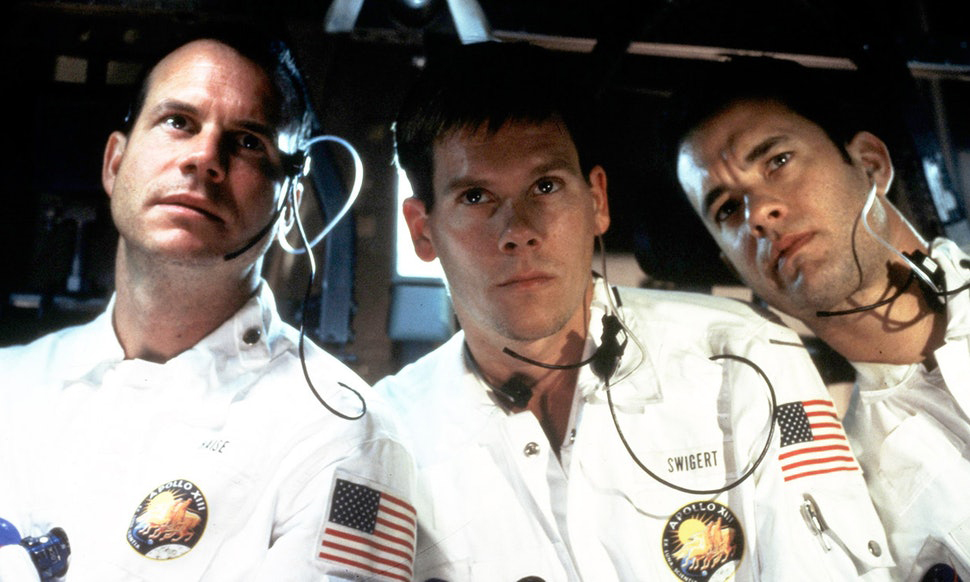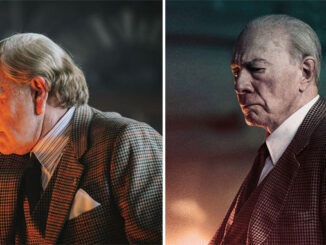
by Lisa Willinger
Dan Hanley and Mike Hill have worked together for years, cutting all of Ron Howard’s pictures together, including Backdraft, Far and Away, Apollo 13 (for which they won an Academy Award), Ransom and EdTV. The two are currently working on How the Grinch Stole Christmas. They met as apprentices at Paramount where Hanley worked with editor Robert Kern on Laverne and Shirley. Kern was very supportive and encouraged him to cut. That led to a job assisting on an MOW that Ron Howard directed, and this led to Night Shift, Howard’s first feature. The show had a very tight schedule, so Howard wanted two editors. As Hanley recalled, the studio wasn’t keen on the idea of these two young editors, who’d assisted on sitcoms and an MOW, being given so much responsibility, but the director fought for them. (Characteristic of Howard’s kindness, he didn’t tell them this until years later.)
At the chat, the two demonstrated a remarkable partnership and lack of personal ego, describing their process with humor and modesty. “If there’s a scene that you think is fun you might grab it and say, ‘Hey the next really great scene that comes along, you grab that one,’” said Hill. “The really difficult scenes you divvy up.” Sometimes one will cut a scene and then the other will make a 2nd pass on it. At other times they split a scene in half and share it. On a scene involving 60 daily rolls, cut on film, Hill recalled, “I would hand Dan pieces of film and we would make decisions together. Sometimes we pass a scene back and forth so many times we’re not sure who cut it.”
They acknowledged how lucky they are to work with Ron Howard, who they characterized as a wonderfully nice “workaholic.” The duo delivers their first cut 4-5 days after wrap. This means keeping up to camera – no small feat on projects that typically print 700,000 feet of film. “I admire some of these guys [working alone] on these big pictures,” Hanley admitted, “we’re putting in some pretty good days, and I’m thinking, how the heck do they get through all that film on their own? I’m amazed by it.”

While they acknowledge the mentoring that enabled them to attain their positions, they do not consider themselves ideal mentors. They clearly appreciate their assistants, but because they have each other, they don’t think their setup is the greatest for an assistant looking to move up. And while they encourage the assistants to play with the material, there is rarely enough time to do it. They strive for a cutting room in which people police themselves, and a remarkable lack of hierarchy prevails. There’s no first assistant and assistants trade duties. “We want them to work with each other and not always dump the lousy work on each other,” asserted Hanley. “Everyone’s fair about it.”
The team characterized Apollo 13 as one of the harder shows they’ve cut – the control room and space material was shot a month apart and material from 2nd and 3rd units dribbled in constantly. The material shot in the air, in zero gravity, had no slates and unusable sound, which kept the assistants busy organizing it and syncing it by eye.
The pair showed a scene from Far and Away in which Mike Hill played a small part. He demonstrated his acting ability…by getting beat up by Tom Cruise. They also screened a terrific sequence from Ransom in which Mel Gibson’s character refuses to accede to the criminals’ demands, and the criminals make it seem as if they’ve killed his son. The intercutting between the criminals and Gibson’s character built the tension beautifully and led to a powerful climax. “On Ransom Howard wanted to experiment with camera moves so he shot the rehearsals on video in various ways,” Hanley recalled. The editors cut Gary Sinese’s side of the scene first on video, and Howard then shot Gibson’s side based on that. “It was a collaboration between production and editing on the way that material was shot,” Hill added.
An informative and entertaining evening, this Fireside Chat offered an inspirational model for collaboration, as well as an interesting alternative to the traditional hierarchy of the cutting room.





